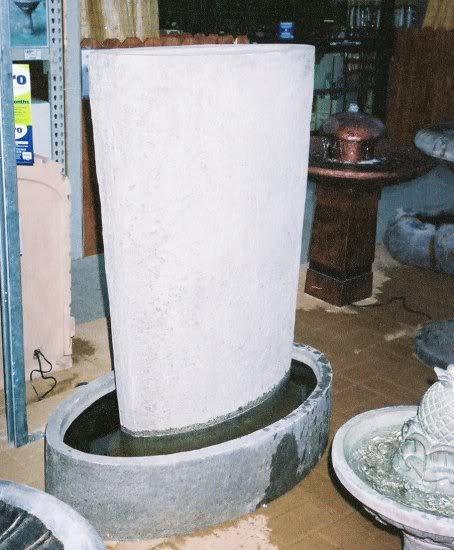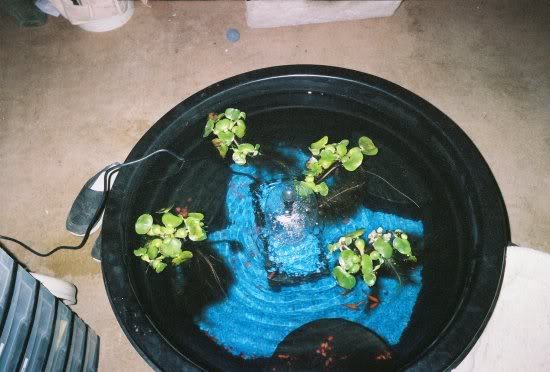renosteinke
Aquarium Advice Apprentice
- Joined
- Nov 19, 2006
- Messages
- 30
My earlier thread "Is River Water Better" was getting a bit long, and way off the original topic .... so I thought it best to post my updates in a new thread.
For a summary, I am setting up an unheated indoor pond - just a bit different from the typical aquarium. The pond holds 35 gallons. Current population is 5 goldfish and 4 water hyacinth plants. The goldfish are not quite sardine size; and, yes, they've grown since I bought them!
I have been waiting patiently for the "cycle" to get started. Well, it looks like it has! Came home yesterday to VERY cloudy water - water that had been clear up till then. I measured radical changes in the water tests ... most notably, the nitrites and nitrates had disappeared, and the ammonia had doubled.
As luck would have it, I had just returned from the area's "premier" fish shop. So, I had the "AmQuel" to treat the water I needed for an immediate 50% water change. I also learned that we do treat the water here with chloramines.
Fish appear healthy and lively. Plants seem to be getting a little blacker every day. Water details, as just measured, are:
pH: 6.8
Ammonia: 4ppm
Nitrites: 5ppm
Nitrates: 0
GH: 90
KH: 30
Temp: 64F
Clarity: Very cloudy (10" deep, can see that there is gravel, but not individual pieces.)
For a summary, I am setting up an unheated indoor pond - just a bit different from the typical aquarium. The pond holds 35 gallons. Current population is 5 goldfish and 4 water hyacinth plants. The goldfish are not quite sardine size; and, yes, they've grown since I bought them!
I have been waiting patiently for the "cycle" to get started. Well, it looks like it has! Came home yesterday to VERY cloudy water - water that had been clear up till then. I measured radical changes in the water tests ... most notably, the nitrites and nitrates had disappeared, and the ammonia had doubled.
As luck would have it, I had just returned from the area's "premier" fish shop. So, I had the "AmQuel" to treat the water I needed for an immediate 50% water change. I also learned that we do treat the water here with chloramines.
Fish appear healthy and lively. Plants seem to be getting a little blacker every day. Water details, as just measured, are:
pH: 6.8
Ammonia: 4ppm
Nitrites: 5ppm
Nitrates: 0
GH: 90
KH: 30
Temp: 64F
Clarity: Very cloudy (10" deep, can see that there is gravel, but not individual pieces.)


